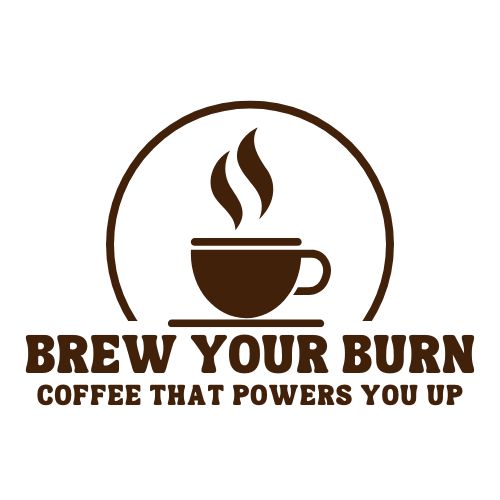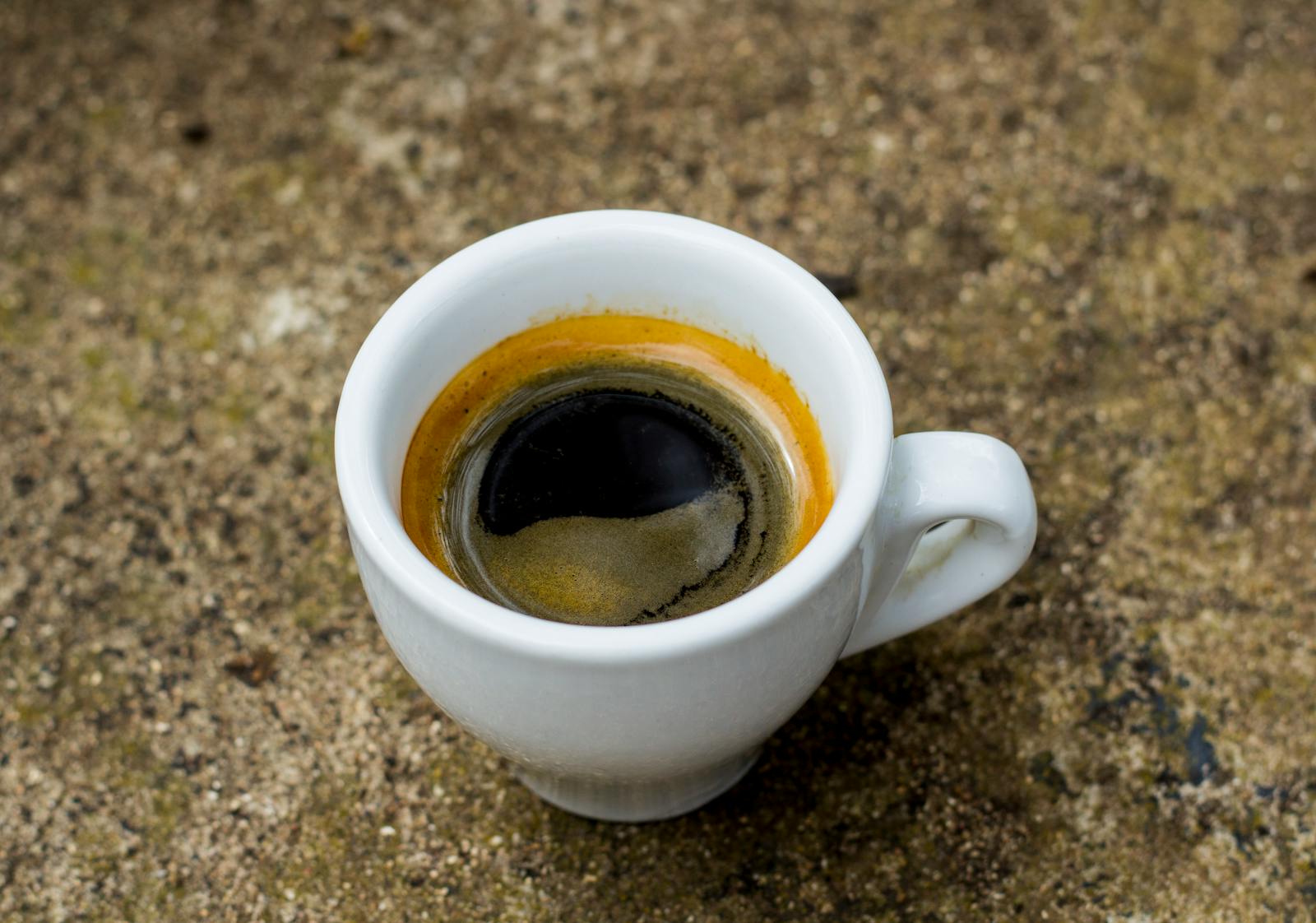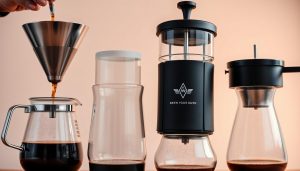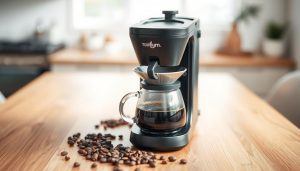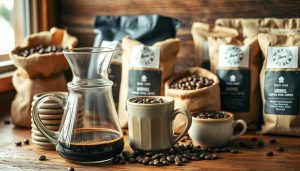Simple Steps for the Best Coffee, Wellness, and Flavor
Curious about How Do I Make Espresso at Home Without a Machine? Discover quick, cheerful ways to brew great coffee with just common kitchen tools.
Ever wonder if you can make true espresso at home without an expensive machine? The short answer: yes, you absolutely can.
While real espresso uses lots of pressure, there are easy ways to get a strong, rich cup using tools you probably already have.
This article walks you through simple steps to make the best coffee, latte, cappuccino, or even cold brew right in your kitchen—no fancy coffee maker needed.
You’ll get details on choosing the right coffee beans, brewing strong espresso-style coffee, and turning it into delicious drinks.
Plus, learn how adding Java Burn or your favorite decaf coffee can make your morning cup work for your wellness.
Whether you’re after a taste upgrade or a healthy routine, making espresso at home gives you control over every cup.
If you’re curious about more ways to brew without a machine, check out easy coffee brewing methods.
Key takeaways from this article:
- You don’t need an espresso machine to make strong, flavorful coffee at home.
- Stovetop, French press, or AeroPress methods can all produce great results.
- The right coffee beans and grind size are essential for homemade espresso.
- You can make lattes, cappuccinos, and even cold brew with simple tools.
- Adding Java Burn to your coffee may support your wellness goals.
- Choosing safe supplements and healthy brewing habits makes coffee both tasty and good for you.
- Even a beginner can brew coffee that feels like a treat and fits a healthy lifestyle.
Key Takeaways for Espresso at Home — No Machine Required
Making espresso at home without a fancy coffee maker can feel like a small superpower.
The good news? You don’t need to be a barista or drop big bucks to enjoy the deep, bold flavor of fresh espresso in your own kitchen. If you’re asking yourself, “how do I make espresso at home without a machine?” you’re already halfway there.
Here are some practical tips and insights to make your home brew taste amazing, even if you’re new to the process.
 Photo by Mikhail Nilov
Photo by Mikhail Nilov
Main Answers to: How Do I Make Espresso at Home Without a Machine?
Here are some of the best ways to create espresso-style coffee with simple tools:
- Moka Pot: This stovetop gadget brews strong, concentrated coffee with a rich flavor. It’s a top pick for homemade espresso and works with most stoves. If you want a taste close to a coffee shop shot, this should be your go-to tool.
- French Press: Use finely ground coffee beans and a little patience. Let the coffee steep longer than usual. Press slowly for a full-bodied, intense brew that can stand in for espresso in most drinks, even your homemade latte or cappuccino.
- AeroPress: With a quick press, you can create a bold, espresso-style concentrate. This method is easy, budget-friendly, and very portable. For more tips on AeroPress, check out this guide on how to make espresso without a machine.
These methods don’t use high pressure like a real espresso machine, but you can still get delicious, strong coffee that’s perfect for mixing with milk or sipping as is.
The Big Takeaways: Success Tips for Espresso at Home
Let’s break down the secrets to great homemade espresso, especially if you love drinks like lattes or cappuccinos:
- Quality Coffee Beans Matter: Fresh, high-quality beans are key. Choose a dark roast for that deep espresso punch. The grind should be fine—almost like table salt. Not sure which beans to use? Our guide on the best coffee beans for espresso at home will help you pick the perfect bag.
- Water Makes a Difference: Use clean, filtered water. The taste and quality of your water can make or break the flavor of your espresso.
- Don’t Skip the Grind Size: For moka pot or AeroPress, a fine grind works best. For French press, keep it slightly coarser—think sand, not dust.
- Perfect Your Timing: Don’t over-brew or you’ll end up with bitter coffee. Keep your eye on the clock, and aim for 1 to 2 minutes for AeroPress, 4 minutes for French press, and under 5 minutes for a moka pot.
- Experiment with Milk for Lattes & Cappuccinos: No milk steamer? Shake warm milk in a jar or use a hand frother. This helps you whip up foam for your homemade cappuccino or latte. See more on this at making cappuccino or latte without a machine.
Healthier Coffee Choices: Options for Everyone
You don’t have to give up your favorite drinks if you avoid caffeine or want to boost your healthy routine:
- Decaf Coffee Still Works: You can use decaf beans for any home espresso method. You’ll keep all the flavor, but cut out the buzz.
- Cold Brew for Gentle Flavor: If hot coffee isn’t your thing or you like smoother, less acidic drinks, try cold brew. Just soak coarse-ground coffee in cold water overnight, then strain.
- Wellness Supplements Like Java Burn: Add a scoop of Java Burn powder to your cup if you like. It’s designed for easy mixing, whether your coffee is hot or cold. Learn more about the Java Burn supplement and how it fits into a healthy routine.
DIY Espresso: What You Actually Need
To recap, here’s what makes home espresso possible, no machine required:
- Stovetop moka pot, French press, or AeroPress
- Fresh coffee beans (regular or decaf)
- A kettle for hot water
- A strong arm or milk frother for foam (if you want lattes or cappuccinos)
- A bit of patience and the willingness to experiment
For simple, effective tips on preparing coffee for any taste, visit our article on the best ways to make coffee without a coffee maker.
Real-World Advice from Coffee Lovers
People around the globe have shared their favorite ways to enjoy espresso without a fancy setup.
Try a few and see what fits your style. For some shared experiences and kitchen hacks, take a peek at this open discussion on ideas for espresso without an espresso machine.
Summary of Key Points:
- You don’t need an espresso machine for delicious, concentrated coffee.
- Stovetop, French press, and AeroPress are all solid picks.
- Grind size and water quality matter as much as the beans.
- With simple tweaks, you can make café-style latte, cappuccino, or cold brew at home.
- Choose decaf or add supplements for more wellness options.
- A sense of adventure is your best tool—coffee at home is about exploring and enjoying the flavors you love.
The Basics: What Makes Espresso, and Why Does It Matter for Health?
Espresso isn’t just a fancy coffee-shop drink—it’s the heart of classic favorites like lattes, cappuccinos, and even iced espresso drinks.
When you think about “how do I make espresso at home without a machine,” it helps to know what makes espresso so special.
Understanding the basics makes it easier to brew the best coffee in your own kitchen, while also giving you more control over your health and wellness.
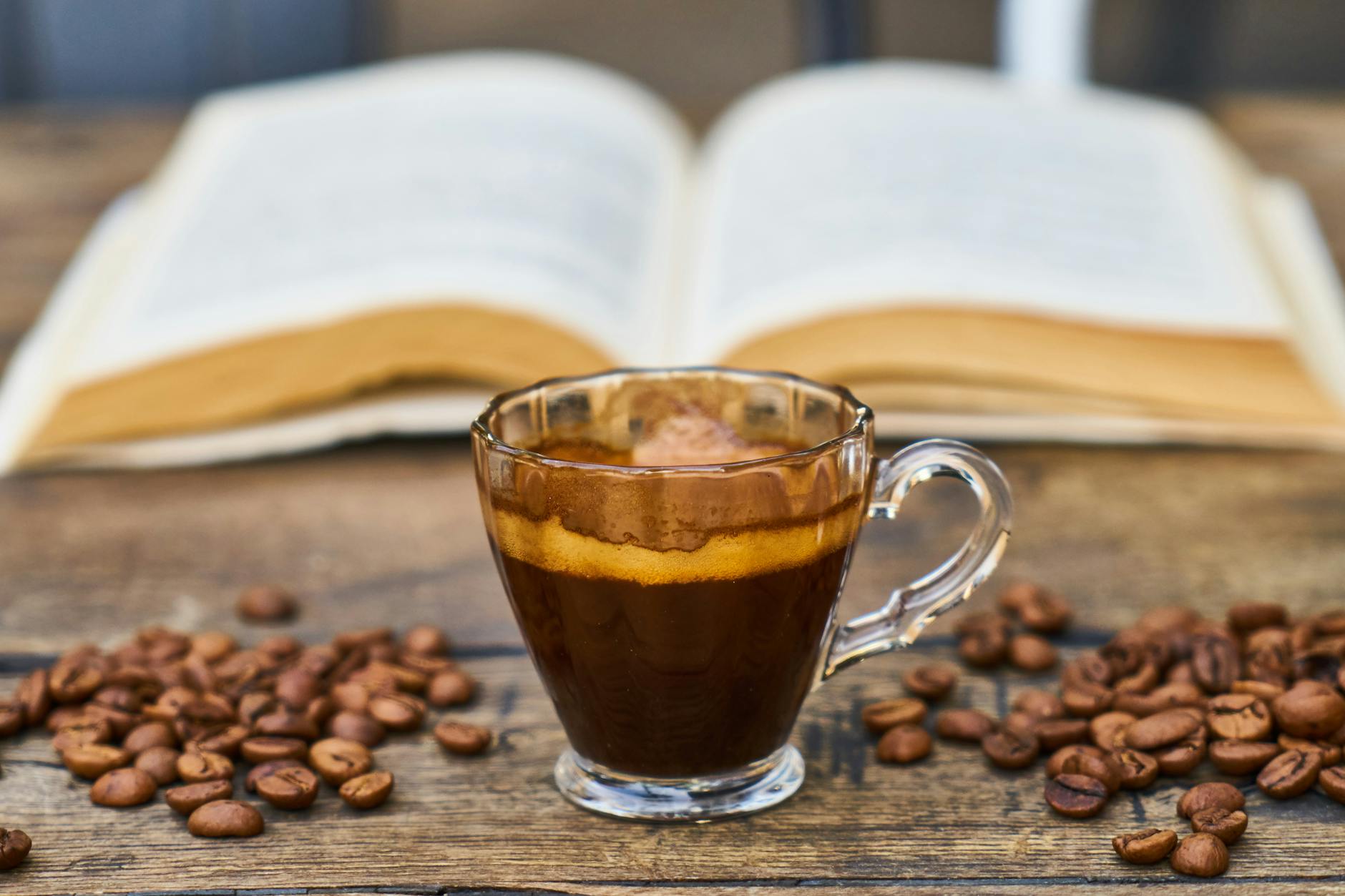 Photo by Engin Akyurt
Photo by Engin Akyurt
What Makes Espresso Different?
Espresso stands out from regular coffee because of three things: the beans, the grind, and the brew style.
True espresso uses high pressure to push hot water through finely ground coffee. At home, you can get close to this with a moka pot or AeroPress by using the right grind and technique.
Here’s what makes espresso tick:
- Fine Grind: Espresso needs coffee beans ground almost as fine as table salt. This creates a rich, thick brew.
- Short Brewing Time: The process usually takes less than 30 seconds in a real machine, but at home with an AeroPress or moka pot, you aim for a concentrated, quick extraction.
- Bold, Intense Flavor: Because espresso is highly concentrated, it’s richer than drip coffee and serves as the backbone of drinks like lattes or cappuccinos.
- Balanced Crema: That golden brown foam on top is called crema. You might not get as much using home methods without a machine, but you can still build a robust flavor and foam for your drinks.
Learn more about the differences and how to choose the best beans and method for espresso in this detailed Guide To Espresso.
Why Does Espresso Matter for Health?
Espresso can pack a punch—not just in taste, but in potential health benefits too.
While coffee sometimes gets a bad rap, a small cup of espresso is lower in calories and can be easier on digestion compared to larger cups of drip coffee.
Here’s how espresso and espresso-style drinks may support your well-being:
- Higher in Antioxidants: Coffee beans are loaded with antioxidants, which help your body fight off daily stress and support healthy cells.
- Potential Memory Boost: Some studies link regular espresso drinking with better long-term memory and sharper focus. Curious about the details? Check out these espresso health benefits.
- Metabolism Support: Espresso gives you a mild energy lift that can help you feel more awake and even assist with metabolism.
- Lower Calories: Small, concentrated servings mean you get more flavor with less volume—perfect if you’re watching calories but still want a strong coffee kick.
It’s smart to be aware of how much caffeine feels right for your body, especially if you’re sensitive. If you love your daily cup but want to avoid the afternoon jitters, you can easily switch to decaf coffee for any of these home espresso methods.
Key Takeaways: Your Home Espresso and Health
Let’s recap a few essentials so you can enjoy the best coffee benefits while making espresso at home:
- Espresso uses fine, dark-roasted coffee beans, a quick brew, and results in a bold, concentrated flavor.
- It’s the base for drinks like lattes, cappuccinos, and even cold brew variations.
- Brewing espresso-style coffee at home lets you control the recipe and choose the healthiest options—like using filtered water or opting for decaf coffee.
- The concentrated nature of espresso means you enjoy big flavor in a tiny cup, often with fewer calories.
- Many of the health perks come from coffee’s antioxidants and gentle energy lift, which can fit well in a balanced daily routine.
Curious which beans will give you the best results at home? Explore top picks and simple tips in our best coffee beans for espresso at home guide.
For more science-backed details on espresso’s influence on health—including ways it may lower risks of conditions like type 2 diabetes—check out this quick overview from USA Today.
Now you know what sets espresso apart, why its bold style matters for great homemade coffee, and some science behind its benefits.
Next, we’ll dive into how to make the perfect cup—no machine needed.
Step-by-Step: Making Espresso-Style Coffee Without a Machine
You can get rich, espresso-style coffee at home without fancy gear. Once you know the basics—right beans, grind, and a trusted brew method—the magic is in your hands.
Here’s how to answer, “how do I make espresso at home without a machine,” with confidence and flavor.
Choosing the Right Coffee Beans for Espresso Without a Machine
Taste starts with the bean. The type of coffee bean you pick makes a big difference in flavor, aroma, and crema—even if you use a French press, moka pot, or AeroPress.
- Flavor Impact: Dark roasts tend to have bold, chocolatey flavors that mimic classic espresso, while medium roasts give a bit more brightness and fruitiness. Light roasts can taste sour or weak in short, pressurized brewing, so stick to dark or medium.
- Best Types for Home Espresso: Try beans labeled for espresso or “Italian roast” for easy results. Always go for fresh, whole beans—if possible, grind them right before brewing.
- Arabica vs. Robusta: Arabica beans are sweet and smooth. Robusta has a stronger, slightly bitter kick, with more caffeine and crema. Many espresso blends use a mix for depth.
- For a full look at these differences, including which type fits your flavor goals, see the Arabica vs Robusta coffee comparison.
If you want more inspiration or community suggestions, you’ll find lively debates about the best beans for espresso when getting started.
Grinding and Measuring for the Perfect Brew
The grind can make or break your homemade espresso.
A proper fine grind brings out the rich taste and helps you get a concentrated brew.
- Grinding at Home: Use a burr grinder if you have one. Aim for a grind texture like powdered sugar—very fine, but not as powdery as flour.
- Measuring Coffee: Start with 7-9 grams (about two level tablespoons) of ground coffee per small espresso-style shot. If you’re using a French press, try a bit more and steep a little longer.
- Best Practices:
- Always use fresh grounds—pre-ground coffee goes stale quickly.
- Store beans in an airtight container out of sunlight for peak flavor.
- Taste-test! Adjust grind or amount if your brew turns out bitter (too fine/too much) or watery (too coarse/too little).
- Remember, for robust flavor in any method, fresh grounds and filtered water are your best friends.
Brewing Methods: French Press, Moka Pot, and Aeropress
There’s more than one way to make espresso without a coffee maker. Let’s break down the most popular tools and how they each produce a strong, espresso-like cup:
French Press
- Add your finely ground coffee and hot water (just off the boil).
- Stir, cover, and let steep for about 3-4 minutes—longer than standard coffee.
- Gently press the plunger down. Pour and enjoy.
- Safe tip: Don’t force the plunger if there’s resistance; lift it slightly and try again.
Moka Pot
- Fill the bottom chamber with hot water and the filter basket with fine coffee grounds.
- Screw the top on and place it on low-medium heat.
- Wait for the gurgling sound—your coffee’s done!
- Safety: Never open or unscrew while on the heat.
AeroPress
- Add fine grounds and hot water (use less water for concentrated shots).
- Stir, insert the plunger, and press gently for 30 seconds.
- Use with the “inverted method” for stronger coffee.
- Always let cool before taking it apart to avoid burns.
For more handy options, check out how to Make coffee without a coffee maker.
Each of these methods brings you very close to traditional espresso—a shot that’s rich, bold, and ready for turning into lattes, cappuccinos, or just sipping straight.
Tips for Healthier Espresso Drinks at Home (Like Latte and Cappuccino)
Espresso-based drinks at home can be every bit as tasty—and healthier—than what you get at a café.
- Milk and Alternatives:
- To make a latte or cappuccino, heat your milk (dairy or plant-based).
- Froth it by shaking in a jar, whisking, or using a hand frother.
- Pour over your strong coffee for a creamy treat.
- Health Upgrades:
- Try oat milk or almond milk for fewer calories or less fat.
- Sweeten with honey, cinnamon, or vanilla instead of sugar-heavy syrups.
- Decaf Coffee: Enjoy late-day espresso drinks without the buzz by swapping in decaf.
- Supplements Like Java Burn: Add supplements such as Java Burn for extra health benefits.
- They’re made to dissolve in hot coffee and can support your routine if you want a metabolism boost. You’ll find more info about wellness coffee boosters at Java Burn.
Want the creamy experience of a coffee shop drink at home? Try these easy ideas:
For more options and the latest on the health perks of your morning cup, take a look at the 9 health benefits of coffee, based on science.
Key Takeaways
- Anyone can answer, “how do I make espresso at home without a machine?” with just good beans, the right grind, and a French press, moka pot, or AeroPress.
- Choose dark or medium roast beans for strong, full flavor.
- Grind fine, measure carefully, and tweak until you love your brew.
- Use hot, clean water and keep your gear safe for daily enjoyment.
- Try lattes and cappuccinos with any milk—switch to decaf or add Java Burn for wellness boosts.
- Making espresso at home opens the door to the best coffee drinks and possibly a healthier routine.
 Photo by Amelia Hallsworth
Photo by Amelia Hallsworth
Maximizing Health Benefits and Enjoyment: Coffee, Supplements, and Daily Wellness
A morning ritual can be as simple as brewing a rich, homemade espresso or mixing up your favorite cup with a health-focused twist.
If you’re learning how to make espresso at home without a machine, you’re already choosing control over what goes into your drink and your body.
Let’s explore how to safely level up your coffee game with supplements and smart choices, while making each cup count for both taste and wellness.
Safe Use of Coffee Supplements and Add-Ins
 Photo by Jonathan Borba
Photo by Jonathan Borba
Adding products like Java Burn to your cup is a simple way to turn regular coffee into something that supports your energy and metabolism.
But a sprinkle of caution is as important as a spoonful of powder. Here’s how to safely add supplements to your daily brew:
- Start Smart: Always begin with the suggested serving size. Don’t double up if you’re new to a product, even if you’re eager for results.
- Read Labels: Take a moment to check the ingredient list for anything that might not sit well with you, especially if you have sensitivities or allergies.
- Mix with Care: If you already drink a lot of coffee, keep tabs on how extra caffeine or stimulants in supplements might add up.
- Don’t Mix Multiple Boosters: Using several products with similar effects at once can make your heart race and leave you jittery.
A little routine goes a long way. Whether it’s Java Burn or another blend, stay mindful of how coffee supplements make you feel over time.
If you’re curious about what to avoid, see these common coffee supplement mistakes that trip people up.
Caring about wellness doesn’t mean giving up your favorite flavors.
It’s really about paying attention to your body and making choices that keep your daily cup both delicious and supportive of your long-term health.
If you want science-backed tips for getting the healthy side of coffee, see our guide on coffee and immune system benefits.
Understanding Cold Brew, Decaf, and Other Options
If espresso is the strong sprinter, then cold brew and decaf are the smooth runners that go the distance.
Alternatives like cold brew and decaf offer variety, especially if you’re after different health perks or want less caffeine.
Cold Brew Pros:
- Lower in acidity, which means it’s gentler on your stomach.
- Naturally smooth and slightly sweet, even without sugar.
- Stays fresh in the fridge for days—great for busy mornings or summer refreshers.
Cold Brew Cons:
- Takes time to make (usually overnight).
- Not as bold as a classic shot of espresso or moka pot brew.
- Uses more coffee beans per cup.
Decaf Coffee Pros:
- Keeps all the earthy, rich flavor of the best coffee without the buzz—perfect for late-day lattes or cappuccinos.
- Useful for anyone sensitive to caffeine or looking to cut back without missing their routine.
Decaf Coffee Cons:
- Sometimes missing the full flavor punch of regular beans, though many brands now taste amazing.
- Slight traces of caffeine can still remain.
Cold brew, decaf, and even blends with added wellness supplements can all fit into any coffee lover’s day.
Want to know how cold brew stacks up for health and weight? Learn more about the impact of coffee on weight reduction and how these choices might benefit you.
Quick List: When to Choose Each Coffee Style
- Espresso (or homemade versions): For a morning kick or classic cappuccino.
- Cold brew: Midday refreshment, less acid, mellow taste.
- Decaf: Evening treat, sensitivity to caffeine, kids’ “coffee drinks.”
- Supplement-infused: Support wellness goals, easy boost to routine.
Making the best coffee at home lets you choose what works with your life.
Whether you use a simple coffee maker, French press, or no equipment at all, the right option keeps your taste buds happy and your wellness on track.
Key takeaway?
There’s plenty of room to enjoy coffee your way—strong, smooth, or with an extra health kick. Always listen to your body and enjoy the journey, one cup at a time.
FAQs: Espresso Without a Machine, Coffee Makers, Beans, and More
When you’re figuring out how do I make espresso at home without a machine, plenty of questions pop up.
It’s normal to wonder about the best coffee, tools, and techniques for rich, bold flavor.
Let’s answer some of the most common questions so you can make your next cup with clarity and confidence.
Can I Really Make Espresso Without a Machine?
Yes, you can make espresso-style coffee right at home using everyday tools.
While you won’t reach the same high pressure as a real espresso machine, gear like French presses, moka pots, and AeroPresses can brew a strong, concentrated cup.
For step-by-step methods using these tools, check out this guide on how to make espresso without a machine.
What Makes Coffee “Espresso” Without the Fancy Machine?
It’s all about how you brew. Espresso is concentrated coffee made fast with very hot water and finely ground beans. At home, try these basics:
- Fine grind (like table salt)
- Dark or medium roast beans
- Small amount of water
- High strength and deep flavor
Even without a machine, you can follow these key steps for an espresso-like drink.
What is the Best Method if I Have No Coffee Maker?
If you don’t have a coffee maker at all, don’t worry—you still have options:
- Stovetop Moka Pot: Makes strong, bold coffee nearly as rich as espresso.
- French Press: Steep finely ground coffee longer for a concentrated shot.
- AeroPress: Quick, easy, and portable; just adjust for less water and more grounds.
Each method gives a different twist on the espresso taste. Find more creative ideas and real-world advice in this Reddit thread about espresso without a machine.
Which Coffee Beans Should I Use for Homemade Espresso?
Choose dark or medium roasts marked “espresso” or “Italian roast” for the most familiar flavor. Always try to grind your beans just before brewing.
For bonus points, explore beans from different regions with our friendly coffee origins and history guide. Every bean brings its own unique taste.
Do I Need Special Equipment Like a Grinder?
A burr grinder helps get fine grounds, which are important for bold flavor.
If you don’t have one, buy pre-ground espresso coffee, but use it quickly for the freshest taste. Many grocery stores offer to grind whole beans for you.
Can I Make a Latte or Cappuccino This Way?
Absolutely! After making your espresso-style coffee, heat and froth milk (or plant milk) by shaking it in a jar or whisking it well.
Pour over your strong coffee for a homemade latte or cappuccino that’s creamy and delicious. Check out our espresso drinking guide for more tips on enjoying classic drinks at home: How to drink espresso properly.
What About Decaf Coffee or Cold Brew?
You can use decaf coffee with any of these home methods, so you get the taste without the jitters.
Cold brew is a slower, smoother option and is perfect for gentler flavor. Both are great for anyone sensitive to caffeine.
Learn how different styles and choices impact your health in our coffee and wellness tips.
Quick Summary and Key Takeaways:
- You don’t need an expensive machine to make espresso at home.
- French press, moka pot, or AeroPress methods work well too.
- Use dark or medium roast coffee beans, finely ground.
- Homemade espresso can be turned into lattes, cappuccinos, and even cold brew.
- Decaf coffee and wellness supplements like Java Burn can help you fit coffee into a healthy lifestyle.
Making the best coffee at home is about finding what tastes good and feels right for you.
With simple tools and the right beans, anyone can create an espresso experience that’s café-worthy and good for your well-being.
For next steps, dig deeper into how coffee fits a healthy life at health benefits of coffee.
Conclusion
Anyone can answer “how do I make espresso at home without a machine” with just a few easy steps. All you need are some fresh coffee beans, a stovetop moka pot, French press, or AeroPress, and a bit of patience.
Even without a coffee maker, you can brew the best coffee right in your kitchen. Try different grind sizes and recipes to get the taste you love.
Use dark or medium roasts for espresso-like flavor, and don’t be afraid to try oat milk, decaf coffee, or even add-ins like Java Burn for wellness support.
Making espresso, latte, cappuccino, or cold brew at home puts you in control. You get rich flavor, less waste, and can tailor every cup to your mood or wellness goals.
Add Java Burn or other coffee boosters if you want extra energy or metabolism support—just start slow and pay attention to how you feel.
If you’re working toward wellness, drinking coffee is one small, enjoyable step in a balanced day. For more ideas on mixing health and your favorite coffee, see the tips in our coffee and weight loss benefits.
A great cup starts small: the best coffee, your favorite method, and a little care.
Share your homemade creations, experiment, and enjoy how simple good coffee can make life brighter—one cup at a time.
Quick Takeaways
- You don’t need a machine to enjoy homemade espresso or the best coffee.
- Use simple tools like a French press or moka pot for bold, rich flavor.
- Choose quality coffee beans, experiment with grind size, and use clean water.
- Lattes, cappuccinos, and cold brew are all possible at home.
- Try decaf coffee or add safe supplements like Java Burn to fit your health goals.
- Good coffee can make your day, support wellness, and taste amazing.
Ready to try something new? Explore ideas for making French press coffee at home or dive deeper into your wellness routine with time-saving coffee hacks.
Thank you for reading. What’s your favorite way to brew or boost your coffee at home? Let us know—we love hearing from fellow coffee fans!
